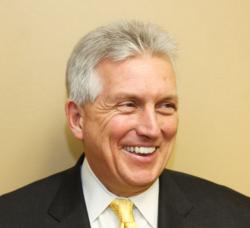Day: March 14, 2018
Engaging Followers/Stakeholders by Elevating Them
Leaders have power to engage followers simply by elevating them in a variety of ways. Essentially, that involves leaders creating opportunities for followers or stakeholders to experience a sense of individual purpose. They do this typically by helping followers understand the larger purpose of the organization and then allowing followers to align with that purpose and use their gifts in pursuing it. This often has a transformational effect in ways that engage and elevate the awareness, motives, values and behavior of those followers. Abraham Lincoln was a transformational leader because of how he pursued the ideals in the Declaration of Independence and how he related to others when he did.
Lincoln on Leadership
Donald Phillips, author of Lincoln on Leadership, notes that Lincoln worked to “motivate and mobilize followers by persuading them to take ownership of their roles in a more grand mission.” Lincoln was able to engage, elevate and therefore transform followers because, as Phillips observed, “He treated everyone with the same courtesy and respect. He lifted people out of their everyday selves and into a higher level of performance (and) achievement. He obtained extraordinary results from ordinary people by instilling purpose in their endeavors.”
Greatest Leader of All Time
Perhaps the greatest example of a leader is Jesus. He understood and acted upon the purpose He had in common with His followers. In that process he also elevated, engaged and transformed them by using their talents to help advance the cause. Robert Greenleaf, author of Servant Leadership described Jesus as “a leader in the fullest meaning of the term.”
Likewise, leadership guru and author, Ken Blanchard said, “After studying both the theory and practice of leadership, I have found that Jesus is the greatest leadership model of all times.”
Though He was an acclaimed and revered teacher and prophet, Jesus lived a humble life of service and commitment to His disciples. He had a clear purpose for His followers and He made that purpose well known: “I have come that they may have life, and have it more abundantly.” They would experience that abundant life by believing in Jesus and His promises, living by the principles He taught and spreading the Gospel to the world. Jesus invested time and energy in teaching and mentoring the apostles, and as a result they were eventually transformed into leaders.
Through His revolutionary teaching, along with His life of service and His death, Jesus established a common purpose and a new and powerful covenant with His followers. That new covenant elevated and transformed followers. By helping His followers understand and embrace their common purpose and giving them crucial roles, He also inspired and engaged their commitment. In fact, among His closest disciples all of them were willing to suffer persecution, and all but one of them died for the cause.
Peter Drucker on Leadership
Similarly, when leaders make and keep promises in pursuit of a common purpose, promises that serve both the organization and its people, it builds credibility and trust. No doubt it also demonstrates the leader’s integrity. That makes it safe for people to engage, follow and thereby be transformed. The late Peter Drucker put it this way:
“The final requirement of effective leadership is to earn trust. Otherwise, there won’t be any followers – and the only definition of a leader is someone who has followers. To trust a leader, it is not necessary to like him. Nor is it necessary to agree with him. Trust is the conviction that the leader means what he says. It is a belief in something very old-fashioned, called ‘integrity.’ A leader’s actions and a leader’s professed beliefs must be congruent, or at least compatible.”
